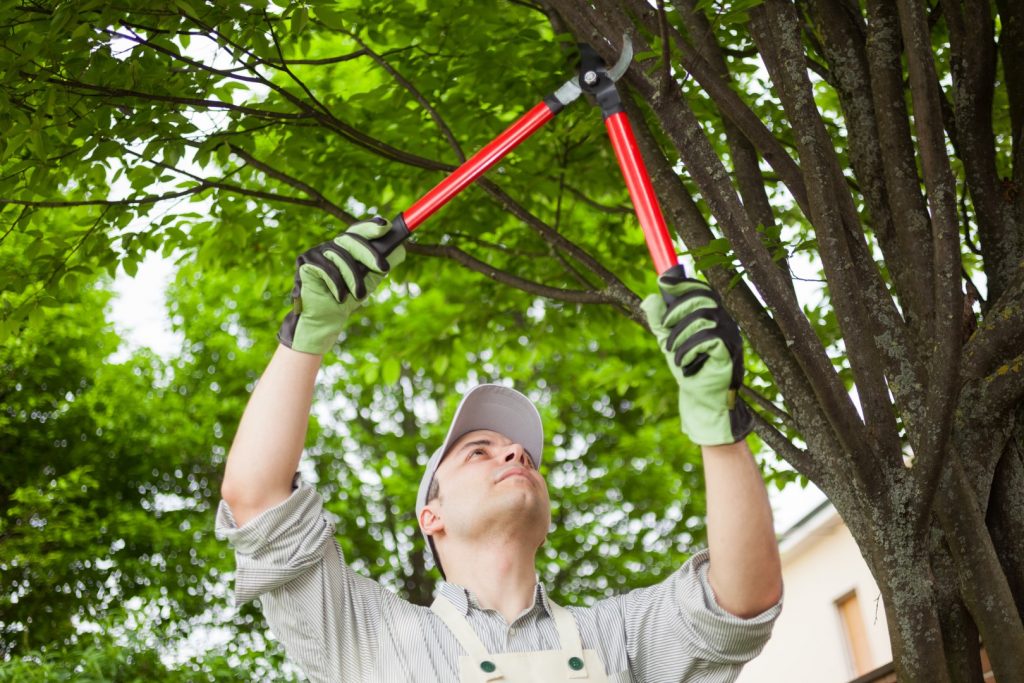If you’re like many homeowners and gardeners, the thought of properly trimming branches from your trees may have come across your mind in the middle of a storm or while you’re working on some projects around the garden. Sometimes, removing a branch from your tree may not seem too hard, and you might think that you can easily accomplish this task on your own.
But before you immediately decide that you’ve got the proper skills to properly trim a branch or even handle extensive trimming work, there are some reasons why it’s better to hire a professional such as Tree Menders to do it for you. They can complete the project safely and efficiently. They also have the right tools and manpower to prevent damage to your home or any adjacent structures.

A farmer pruning orange trees with an electrical saw after harvest time
If you’ve decided to go the DIY route, here are some essential tips to remember:
First of all, you need to take into consideration what part of your tree you’re planning to remove the branch from, as well as how big and strong it is. In other words, some branches may be too weak to be able to withstand the pressure, which will result in it breaking off and falling back into your yard. Therefore, a weaker branch is the ideal one to remove instead of the stronger branches that can be beneficial to the health of your tree. Not to mention, removing these weaker branches cause little damage, and will mostly benefit your tree.
You may be wondering how to trim branches safely and efficiently. The answer lies in the fact that when you trim a tree, one of your most important priorities is going to be the aesthetics of the entire tree. This is a big deal because if you don’t trim properly, you can cause major damage to the tree. You shouldn’t trim branches unless you’re absolutely certain that you won’t damage the tree.
The first thing you want to do when trimming a branch, and doing it the right way, is to make sure that you’re not cutting down the stronger branches. Remember that a blunt blade can quickly damage a tree, and can eventually lead to its death.
Once you’ve located which branches need to go, you can start trimming your tree. The best way to go about doing this is to use a pair of pruning shears. They’re designed to cut straight through the branch without damaging the tree. For branches that are thicker and have begun to die it would be better to use a chainsaw to cut them down. However, you shouldn’t use a pair of scissors while trimming branches. The same applies to a pair of shears or a pair of pruning shears. If you use these kinds of tools, you’ll end up doing more damage than good.
When you’ve located which branches need to be trimmed, and have gathered the appropriate tools for this task, the next step is the trimming. Unless the branches you’re trimming are closer to the ground, and your goal is to raise the crown of the tree, then you might need a ladder to reach the branches you’re looking to trim.
When you are raising the crown of a tree this can be due to aesthetics, or to serve a specific purpose like trimming branches away that are blocking a stop sign near your property. Raising the crown is simple, and can make the tree appear taller, as well as serve a number of purposes that relate to safety.
When you’re looking to thin the crown of a tree, trim away the thinner, weaker, branches to allow the stronger branches room to grow and breathe. When thinning the crown, you don’t want to remove more than 25% of the branches as this could be damaging to the overall health of your tree.

Professional gardener pruning a tree
No matter if you’re doing crown reduction due to safety, tree health, or overall aesthetics, the process doesn’t change. When reducing the crown of a tree, you’re minimizing the size, taking off the crown on the top and the sides. You can focus on the smaller branches, or a combination, depending on how the crown has grown over time.
Conclusion
Regardless of the reason you have for trimming tree branches, there are a number of safety measures to follow not just for yourself but for other people around you. You can also save time and money by getting help from tree trimming service Santa Clarita and let the experts do this type of work for you. Once these measures have been met and you’ve gathered all the appropriate tools, this is when you can begin trimming to ensure the health of your tree or to improve safety or landscape aesthetics.